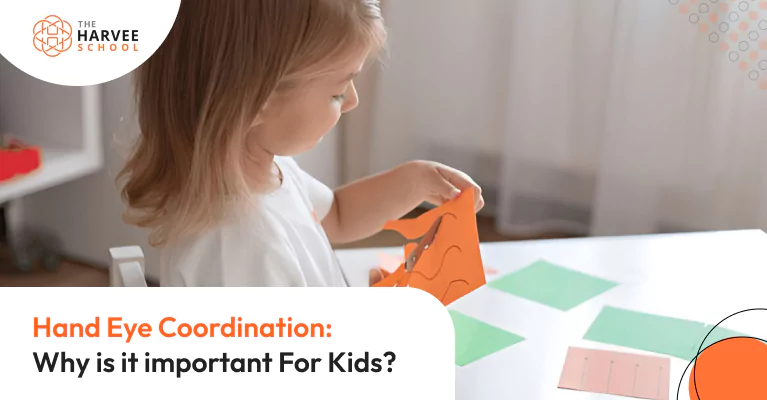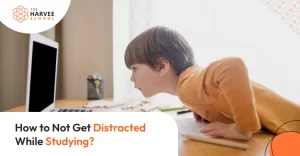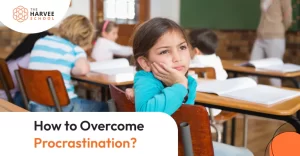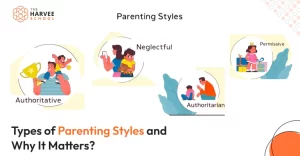Hand Eye Coordination:Why is it important For Kids?
Hand-eye coordination plays a crucial role in a child’s physical and cognitive development. It refers to the ability to process visual information and use it to guide hand movements effectively. Whether it’s catching a ball, writing, drawing, or even using digital devices, good hand-eye coordination is essential. In this blog, we’ll explore why hand-eye coordination is vital for kids, its benefits, and how to improve it.
What Is Hand-Eye Coordination?
Hand-eye coordination is the ability of the brain to synchronize visual input with hand movements. This skill allows children to perform daily activities with accuracy and precision. From tying shoelaces to playing musical instruments, many tasks require well-developed hand-eye coordination.
Why Is Hand-Eye Coordination Important for Kids?
Developing hand-eye coordination early in life provides numerous benefits, including:
1. Enhances Motor Skills
Fine and gross motor skills rely heavily on hand-eye coordination. Activities like coloring, writing, and cutting paper help children develop fine motor skills, while playing sports enhances gross motor skills.
2. Boosts Academic Performance
Good hand-eye coordination is essential for tasks like handwriting, drawing, and using a computer mouse. Kids with strong coordination often excel in subjects like mathematics and science due to better spatial awareness and problem-solving skills.
3. Improves Sports and Physical Activities
Children who engage in sports such as basketball, baseball, or tennis develop better reflexes, agility, and balance. These skills not only help in sports but also contribute to overall physical health.
4. Supports Daily Life Skills
Simple activities like buttoning shirts, eating with utensils, or pouring water require a well-coordinated connection between the eyes and hands. Improving these skills makes everyday tasks easier for children.
5. Enhances Cognitive Development
Hand-eye coordination is closely linked to brain development. Activities that involve coordination help improve concentration, focus, and problem-solving abilities, which are crucial for academic and personal growth.
How to Improve Hand-Eye Coordination in Kids
The good news is that hand-eye coordination can be improved through various fun and engaging activities. Here are some effective ways:
1. Playing Sports and Outdoor Games
Encourage children to play games that involve catching, throwing, or hitting objects. Games like baseball, basketball, and badminton significantly enhance coordination.
2. Puzzles and Building Blocks
Solving puzzles, stacking blocks, and playing with LEGO help refine fine motor skills and improve spatial awareness.
3. Drawing, Coloring, and Writing
Art activities like sketching and painting encourage precise hand movements, which strengthen coordination.
4. Video Games and Virtual Reality Activities
Certain video games that require precise control and movement can be beneficial when used in moderation. Games like ping-pong simulators or VR-based interactive games enhance hand-eye coordination effectively.
5. Hand-Eye Coordination Exercises
Specific exercises such as juggling, hitting a target with a ball, or balancing objects can improve coordination skills.
6. Musical Instrument Training
Learning to play an instrument, such as a piano or guitar, enhances both hand control and concentration, improving coordination significantly.
Signs of Poor Hand-Eye Coordination
While some children naturally develop coordination, others may struggle. Here are some signs that indicate a child might need extra support:
- Difficulty catching or throwing objects
- Poor handwriting or messy drawings
- Struggles with using utensils properly
- Slow reaction time in sports or games
- Frequent clumsiness or bumping into objects
When to Seek Professional Help?
If a child’s hand-eye coordination does not improve with practice, consulting an occupational therapist might be beneficial. Professional guidance can help address coordination challenges and provide personalized exercises to enhance skill development.
Conclusion
Hand-eye coordination is an essential skill that influences a child’s ability to perform everyday tasks, excel in academics, and enjoy physical activities. By incorporating fun and engaging activities into their daily routine, parents and educators can help children improve their coordination effortlessly. Encouraging kids to participate in sports, puzzles, art, and musical activities will set them up for a successful and confident future.






